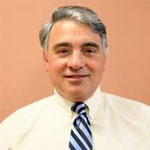Research Spotlight: Palisano Pioneers Essential Research on Cerebral Palsy
December 2, 2013
 Cerebral palsy, a term that encompasses a group of motor conditions, movement disorders, and muscle tone or posture disorders, affects almost 800,000 Americans. Robert Palisano, PT, a distinguished professor in the College of Nursing and Health Professions’ Department of Physical Therapy and Rehabilitation Sciences, has been researching cerebral palsy in children and adolescents for the past twenty years.
Cerebral palsy, a term that encompasses a group of motor conditions, movement disorders, and muscle tone or posture disorders, affects almost 800,000 Americans. Robert Palisano, PT, a distinguished professor in the College of Nursing and Health Professions’ Department of Physical Therapy and Rehabilitation Sciences, has been researching cerebral palsy in children and adolescents for the past twenty years.
The initial work started in the 1990’s, when he and other researchers developed a classification system that categorized children with cerebral palsy into five “levels” of gross motor function. “Level I includes children who walk in all settings, level II includes children who walk but might be restricted from going long distances, while level V includes children who can’t properly control their head or trunk,” explained Palisano. “The classification system has since become an international standard because it enables professionals, researchers, families, and others to communicate more efficiently and specifically, given that cerebral palsy is a very broad term.”
After establishing this classification system, Palisano shifted his attention to developing what he called “motor development curves,” which are similar to the height and weight curves with which most of us are familiar. These motor development curves essentially use the five “levels” of the classification system to track the development of children with cerebral palsy over time. This project was entitled the Ontario Motor Growth study, as it was was conducted by the CanChild Center at McMaster University on a population-based sample of children living in Ontario, Canada. The study involved 656 children whose development researchers followed over time and then used the data to create five curves that provided information on prognosis and insight into how children with cerebral palsy develop. In a subsequent study, involving the same children as adolescents, the curves were extended to age twenty.
Since then, Palisano has done extensive research with two College of Nursing and Health Professions colleagues: Drs. Margo Orlin and Lisa Chiarello, both associate professors in the Department of Physical Therapy and Rehabilitation Sciences. With the help of a large grant from Shriners Hospitals for Children, they studied activity and participation in children and youth with cerebral palsy. The study was conducted at 7 Shriners hospitals throughout the United States, with Drexel and Shriners Hospital in Philadelphia being the lead sites for the research. As a result, Drs. Palisano, Chiarello, and Orlin were able to describe the participation of children with cerebral palsy, identify factors associated with children’s participation in recreational activities like sports or simply playing with friends, and learn about the goals children and families have for participation.
Their main goal was to formulate a better understanding of what enables children to participate more often, from family support to available services. “The goal was to understand what resources families who had children with cerebral palsy needed in all phases of their lives,” said Palisano. Currently, Palisano and Chiarello are part of an international research team that have two complementary grants from the Canadian Institute of Health Research and the U.S. Patient Centered Outcomes Research Institute. The aim of this research is to determine developmental trajectories in children with cerebral palsy in areas other than motor function, including range of motion, muscle strength, balance, self-care, and participation in family and recreation activities. This study will continue until 2016.
“We now have good evidence of development of gross motor function in children with cerebral palsy. We share this information with children and families and describe how a child’s performance compares to children with cerebral palsy of the same age and classification level,” Dr Palisano continued. “This is useful for the evaluation of progress and future planning.”
Palisano is interested in learning about the whole picture in terms of environment and support systems. Like the work at Shriners, he is learning about how communities can better support children with cerebral palsy to participate in desired leisure and recreation activities. “Though a child with cerebral palsy might be limited physically in what he or she can do, this does not have to restrict participation. We have come to appreciate that through self-determination, a supportive family, and the opportunity to be involved in community programs that children with cerebral palsy can achieve their goals and aspirations,” elaborated Palisano.
The various research projects conducted by Palisano and other Drexel faculty members and researchers have also served as a learning opportunity for Drexel students. Two graduates of the PhD Program in Rehabilitation Sciences completed their dissertations on the research as part of the study of children’s activityand participation funded by Shriners Hospitals for Children. Furthermore, the Doctor of Physical Therapy (DPT) students complete a final project on research and scholarship, where they present findings at national conferences. Palisano also recognizes the great resource of the United Cerebral Palsy of Philadelphia and Vicinity organization, where Margo Orlin is the President of the Board of Directors. “We have a good relationship with them. It has benefited our program, and has been doing so for about 30 years,” said Palisano.
Cerebral palsy is not a genetically inherited disability, but rather the result of pre-term delivery or of damage caused to the brain during the fetal stage due to a lack of oxygen to the brain. Although there is no cure, Palisano strongly believes in prevention through good pre-natal healthcare.